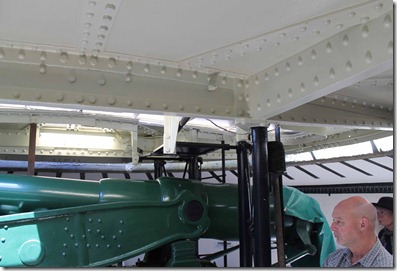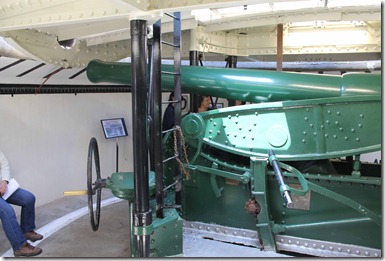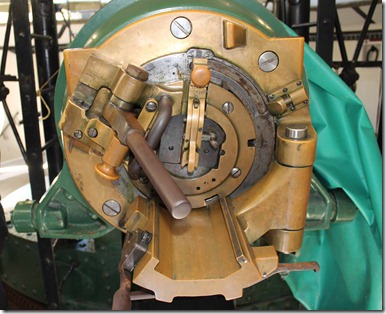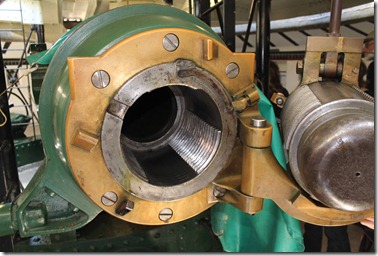The Disappearing gun is a familiar and intriguing weapon mounted in major fortifications in Australia and New Zealand. It was the outcome of mid-19th century technological advances in weaponry such as the increasing size and power of marine and coastal artillery, the development of armoured steam ships negating the defensive power of tides and wind and the development of operational research analysing the impact of Civil War bombardments of coastal forts and the results of the famous battle of Alexandria (in 1882). All this work lead to the conclusion that coastal artillery needed to be better protected if only to preserve the crews serving the weapons. This conclusion resulted in a variety of new fortification and gun mounting designs which were developed from the mid-1860s.
A disappearing gun is one where a rifled, breach loading, gun is mounted on a hydro-pneumatic carriage in which the recoil is checked by cylinders containing liquid and air, the air when compressed furnishing the power for restoring the gun to the firing position. The gun was swung above the parapet of the mounting and pointed and elevated from below and then fired. The recoil swung the gun below the parapet where it was reloaded. A metal (armoured) shield covered most of the gun pit in British designs. The crew was protected below the parapet and the gun itself would have been a difficult target to hit.
The British design used throughout the colonies was by Armstrong a company with expertise in hydraulics and of course pioneering the breach loading design. The “Disappearing Gun” was sold to the colonies in the mid 1880’s as well as to China and Thailand. A similar design the Buffington–Crozier Disappearing Carriage was adopted by the United States for coastal artillery from the mid-1890s and some saw service against the Japanese.
The gun in its loading position. The gun can be trained using the wheel visible in the photo. The band around the mounting gives the angle.
I was involved in looking at the fortifications in Victoria in the 1980s when hydro-pneumatic mountings were discovered and there were plans for reconstructing South Channel fort. I had also seen batteries in Sydney and Queensland where disappearing guns were mounted. I knew of the batteries at North Head at Auckland which I had briefly visited and that there were other batteries at Canterbury. Curiously each State claims their battery was the first or prototype mounting!
During the 2011 Australasian Society for Historical Archaeology Conference the pre-conference tour visited the Otago Peninsula. At Taiaroa Head, which dominates the narrow entrance to Otago Harbour, extensive fortifications were constructed following the usual fears of a Russian invasion. In 1885 the New Zealand Government bought 10 8” and 13 6” disappearing guns from Armstrong’s Elswick 0rdnance Company. The gun at Taiaroa Head is a 6” with a range of about 6600 ft. The propellant used was initially gunpowder and the shells were the typical range of shells using gunpowder. Later Cordite MD was used as a propellant and presumably more advanced shell were used.
Although obsolete by 1900 in New Zealand they were manned during World War 1 but abandoned about 1925. However unlike other guns the gun was not cut up for scrap metal and was recommissioned during World War 2, and later completely restored by the Otago Antique Arms Association. The mounting site is amid an Albatross colony.
 Detail of the shield protecting the crew from shrapnel.
Detail of the shield protecting the crew from shrapnel.
The breach in its closed position.
The breach open showing the screw mechanism.


